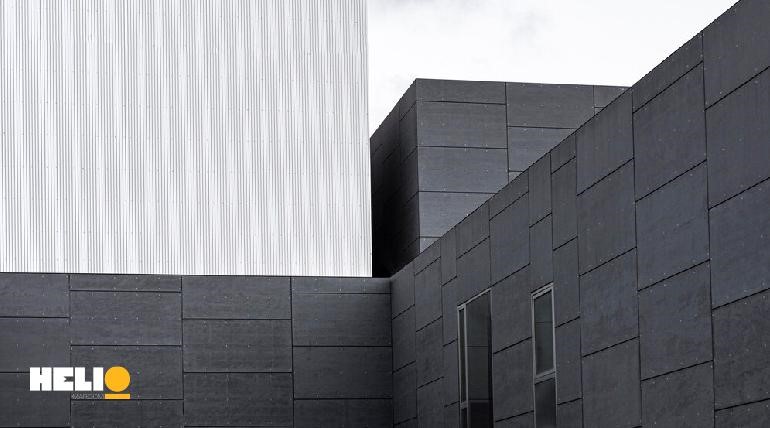Contemporary architecture, a term that captures the essence of today’s architectural innovations, stands as a testament to human creativity and technological advancement. Architects, urban planners, and design professionals must grasp the nuances of current architectural styles to push the boundaries of what buildings can be. This post explores the characteristics, notable projects, and future trends within contemporary architecture, providing a comprehensive outlook on this dynamic field.
To truly understand the depth and scope of contemporary architecture, one must examine it through the lens of leading architectural firms at the forefront of this movement. Helio Archi, a renowned firm within the architectural community, exemplifies how innovative design can meet sustainability and functionality in a modern context. By analyzing their pioneering projects, we can discern the principles that define contemporary architecture today.
Contemporary Architecture Historical Context
Architectural movements have continuously evolved, influenced by shifting technology, culture, and socio-economic factors. From the intricate details of Gothic architecture to the sleek lines of Modernism, each period has contributed to the rich tapestry that forms today’s architectural landscape. Understanding this evolution offers valuable insights into contemporary architecture’s foundation.
Global Influences and New Challenges
Unlike Modernism, which was largely concentrated in the West, contemporary architecture is a truly global phenomenon. Architects around the world are drawing inspiration from local traditions and materials, creating buildings that are both culturally significant and environmentally sensitive. Sustainability has become a major concern, pushing architects to develop new methods and technologies that minimize environmental impact and create energy-efficient structures.
The Rise of Technology and New Materials
Advancements in technology have played a crucial role in shaping contemporary architecture. Sophisticated computer-aided design (CAD) software allows for complex and daring designs to be brought to life. The development of new materials, such as high-strength concrete, lightweight steel alloys, and innovative glass composites, has opened up new possibilities for form and function. These materials allow for the creation of buildings that are not only visually striking but also structurally impressive.
A Reflection of Our Times
Contemporary architecture is a dynamic and ever-evolving field that reflects our time’s social, cultural, and technological realities. The buildings we create today serve not only as functional spaces but also as testaments to our values and aspirations. By understanding its historical context, we can appreciate the rich tapestry of influences that have shaped contemporary architecture and anticipate the exciting possibilities that lie ahead.
Rediscovering Tradition: How Local Influences Shape Modern Design
For decades, architectural trends pushed towards a globalized aesthetic. Sleek, minimalist buildings made of steel and glass appeared in cities worldwide, sometimes feeling out of place with their surroundings. But a decisive shift is underway that could change how we view contemporary buildings. Architects are turning away from generic designs in favor of a more thoughtful approach that respectfully integrates local traditions, materials, and wisdom.
What Is Contemporary Architecture?
Contemporary architecture refers to present-day design styles that push the boundaries of traditional architectural concepts. Bold and unconventional, it prioritizes innovation, sustainability, and functionality while also embracing cultural influences. It often incorporates advanced building techniques and materials, such as carbon-neutral or recycled materials, to create environmentally conscious structures.
Characteristics of Contemporary Architecture
Contemporary architecture is marked by several key characteristics:
- Minimalism and simplicity that focus on clean lines and uncluttered spaces.
- Sustainable design principles aimed at reducing environmental impact.
- Integration of technology and innovation to improve functionality and efficiency.
- Enhanced user experience through functional and accessible designs.
- Seamless blending of indoor and outdoor spaces, eroding the barriers between nature and built environments.
- Cultural sensitivity and diversity, acknowledging global influences and traditions in design.
Notable Contemporary Architectural Projects
Among the multitude of innovative projects that have shaped the landscape of contemporary architecture, certain edifices stand as landmarks of 21st-century design. The Beijing National Stadium, also known as the Bird’s Nest, is a masterpiece that demonstrates the fusion of aesthetics, functionality, and ecological sensibility. Its unique steel webbing encases a space that can adapt to a myriad of events, exemplifying flexibility in modern design.
Similarly, the Burj Khalifa in Dubai, currently the world’s tallest building, is not merely an engineering marvel but also a symbol of how contemporary architecture can redefine urban skylines. With its multi-faceted design inspired by traditional Islamic architecture, it embodies the essence of cultural sensitivity merged with cutting-edge technology.
These projects, along with numerous others, underscore the dynamic nature of contemporary architecture. They highlight a willingness to explore new forms, materials, and technologies while paying homage to environmental and cultural contexts.
Key Contemporary Architectural Styles
Several styles define today’s architectural scene:
- Modernism: An evolution of the modernist principles of functionality and simplicity.
- Postmodernism: A style characterized by playful, eclectic elements and bold forms.
- Deconstructivism: This style challenges traditional architectural norms with fragmentation and non-linear forms.
- High-Tech Architecture: Celebrates the visible display of industrial materials and structural elements.
- Parametricism: Utilizes computational design techniques to create fluid, organic structures.
- Sustainable Architecture: Focuses on eco-friendly and energy-efficient design practices to create green buildings.

The Buildings That Change With Us: Where Walls Move and Spaces Evolve
Imagine a building that could reshape itself, just like you rearrange your living room. It sounds futuristic, but it’s a reality taking shape in the world of contemporary architecture. Thanks to innovations like kinetic facades, intelligent materials, and modular systems, buildings are becoming more responsive, adaptable, and efficient – which could revolutionize how we live and work.
Kinetic Facades: Architecture in Motion
Think of a kinetic facade like a giant, sophisticated set of blinds. But instead of simply blocking the sun, it can transform a building’s appearance and function throughout the day. Panels might shift to provide shade, open for ventilation, or even become platforms for media displays. This isn’t just about looking cool but optimizing energy use and comfort in real-time.
Smart Materials: Sensing and Responding
Materials themselves are getting an intelligence upgrade. Imagine walls that change opacity in response to light, letting in warmth when it’s cold or filtering brightness when it’s too sunny. Or building surfaces that are self-clean, repelling dirt and grime. These technologies make buildings more adaptable and lower maintenance costs over time.
Modular Magic: Reconfigure at Will
Modular construction, where rooms or whole units are prefabricated, is known for speed. But its long-term potential is even more significant. Need to expand a workspace? Add modules. Is a pop-up retail space needed? Assemble it in days. This approach reduces construction waste and allows spaces to grow or shrink alongside a business’s or community’s needs.
The Benefits: It’s About More Than Just Cool Tech
- Space Optimization: Buildings that change form can serve multiple purposes over time. Think of a conference hall that converts into several smaller meeting rooms. This maximizes the use of every square meter.
- Longevity: Adaptable buildings are less likely to become obsolete. As our needs evolve, the structure can evolve with us, increasing its lifespan and reducing the need for demolition.
- Sustainability: Responsive buildings fine-tune their energy use and minimize material waste throughout their long lives. That’s true sustainability.
The Future is Flexible
We are still in the early days of this transformation, but the potential is clear. As architects embrace these technologies, expect to see buildings that breathe, transform, and change with us, blurring the lines between our structures and the dynamic world around them.
Examining Notable Contemporary Buildings
Highlighting some of the most iconic examples of contemporary architecture:
- The Shard, London: A striking example of how modern buildings can redefine city skylines.
- The Guggenheim Museum, Bilbao: Demonstrates how innovative designs can transform urban environments.
- The High Line, New York City: An innovative public space epitomizing the fusion between nature and urban design.
- The Sydney Opera House, Sydney: An iconic structure that blends functionality, aesthetics, and cultural significance.
- The CCTV Headquarters, Beijing: This building challenges traditional architectural forms with its unique shape and structure.
Trends Shaping Future Architectural Styles
Looking forward, several trends are poised to influence the evolution of contemporary architecture:
- Advancements in technology and materials, allowing for new possibilities in building designs.
- Sustainable design practices and green architecture, highlighting the importance of environmental stewardship.
- Urbanization and the rise of mixed-use developments, reflecting changing lifestyles and community needs.
- Wellness and biophilic design, focusing on human health and well-being within built environments.
- Cultural influences and globalization driving diversity and innovation in architectural designs.
Conclusion
Contemporary architecture embodies the spirit of our times, reflecting advancements in technology, a commitment to sustainability, and an evolving socio-cultural landscape. As we look to the future, it is imperative for those involved in the creation and appreciation of built environments to stay informed about emerging technologies, materials, and design philosophies. By engaging with contemporary architecture, we can continue to innovate and inspire, creating spaces that not only meet the functional needs of today but also envision a sustainable and aesthetically enriched world for generations to come.
We invite architects, enthusiasts, and professionals to explore further and discuss the dynamic world of contemporary architecture, continuing to push the envelope of what is possible in our built environments.
Contact Helio Archi





